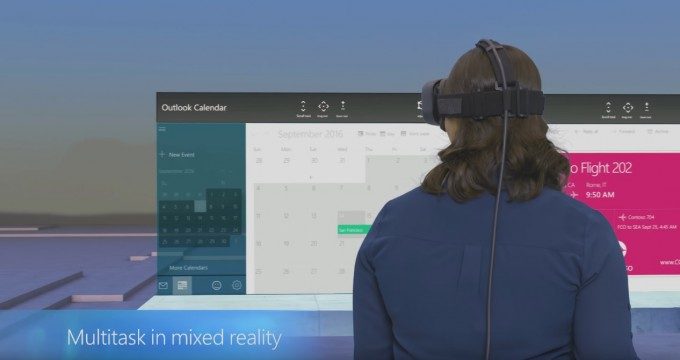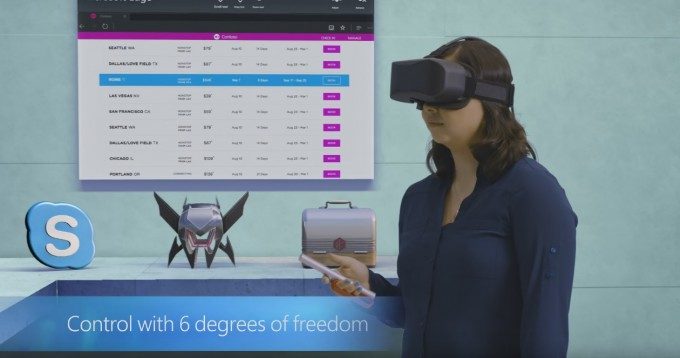At Intel’s Developer Forum this week, Microsoft has announced that it’s to bring its ‘Holographic Shell’ to Windows operating systems everywhere by 2017 with an aim to provide “one platform for VR, AR and MR.”
For some perhaps, there’s nothing more terrifying than the thought of being psychologically immersed inside an operating system, perhaps particularly Windows. Nevertheless, this is part of what Microsoft is promising with its planned launch of Windows Holographic Shell which it’s promised will arrive in every Windows 10 installation via an update some time in 2017.
What is Windows Holographic? Well, aside from being a slightly disingenuous use of the term ‘holographic’, you’ll have already seen glimpses of the technology during the various video demonstrations of Microsoft’s augmented reality visor, HoloLens. But what Microsoft have now demonstrated at IDF point toward a broader platform, one on which they’ll be encouraging developers of all immersive disciplines AR, VR an MR to build upon.
The video demonstration embedded above and released by Microsoft yesterday, shows a concept (but apparently real-time rendered) depiction of where the company sees its Windows Holographic APIs heading and for reference, Microsoft’s use of the term ‘Mixed Reality’ differs to generally held definitions. Generally, MR refers to imagery formed from fusion of reality and virtual sources.
In Microsoft’s Windows Holographic lexicon, it seems to mean different forms of disparate virtual content. In the case of the demonstration, floating 2D windows presented in an immersive 3D environment. Terry Myerson, Executive Vice President, Windows and Devices Group said in an accompanying blog post that “Windows Holographic shell enables an entirely new experience for multi-tasking in mixed reality, blending 2D and 3D apps at the same time, while supporting a broad range of 6 degrees of freedom devices.”
Of course, this all played nicely alongside the prior announcement, also at IDF, that Microsoft and Intel were joining forces on a new a new Windows Holographic powered All-in-one VR headset called ‘Alloy’, also featuring untethered computer vision based positional tracking.
We reported recently that Microsoft had stepped up it’s efforts to bring its HoloLens AR visor to businesses in a more Enterprise focused fashion with the launch of ‘Commercial Suite’, with this announcement that a proper, integrated Windows-based platform for VR, AR and MR applications will push to desktop operating systems everywhere next year, Microsoft appear to finally have a plan on how to capitalise on the immersive technology revolution.









